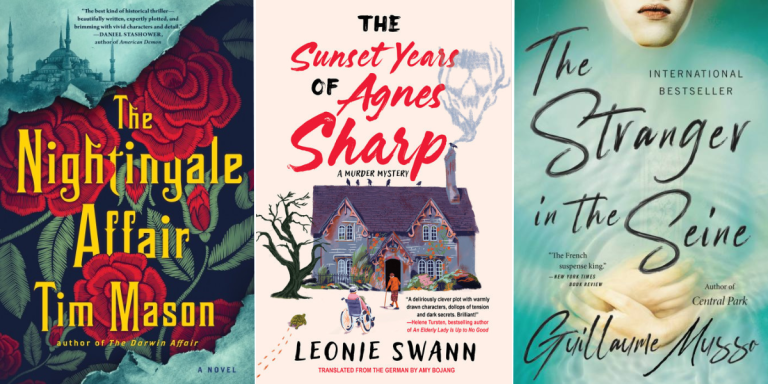Inverted Detective Stories: When You Already Know Whodunnit

We love mystery novels. They’re exciting puzzles where you’re introduced to a crime and then must uncover, along with the characters, who is responsible. It’s the classic whodunnit formula, and it has worked for mysteries and thrillers throughout the ages. But what happens when you already know whodunnit? You get a play on the tried-and-true formula: an inverted detective story.
Rather than a whodunnit, an inverted detective mystery is more of a “howcatchem.” The story starts with the crime and reveals who the criminal is, and from there, we unravel other details of the mystery. How is the criminal going to stay hidden? How will they be caught? Why did they commit the crime in the first place? Because discovering the answer to who committed the crime is exciting, but that’s not all there is to a mystery.
R. Austin Freeman claimed to be the inventor of the inverted mystery in his essay “The Art of the Detective Story,” in which he references his 1912 short story collection The Singing Bone. “Some years ago I devised, as an experiment, an inverted detective story in two parts,”Freeman wrote. In the first part, Freeman said the reader would see the crime committed and know all about the criminal. “But,” Freeman explained, “I calculated that the reader would be so occupied with the crime that he would overlook the evidence. And so it turned out. The second part, which described the investigation of the crime, had to most readers the effect of new matter.”
But while Freeman might have given the inverted detective story its name, there are examples of this format long before Freeman’s 1912 example. Fyodor Dostoevsky’s Crime and Punishment is a story that focuses on the psychological and sociological issues surrounding the crime and the murderer Rodion Raskolnikov rather than the murder itself.
Another noteworthy example of the inverted detective story is Anthony Berkeley Cox’s Malice Aforethought (written under the pen name Frances Iles). The first sentence in the story names the criminal and sets up the crime: “It was not until several weeks after he had decided to murder his wife that Doctor Bickleigh took any active steps in the matter.” The protagonist is Edmund Bickleigh, a physician in a loveless marriage. He falls for a rich young woman name Madeliene who says she would never be with a divorced man, but she will be with a widower. So he plots to poison his wife, and the rest of the story follows Bickleigh’s psychological torment both before and after the murder.
In 1963’s Three for Midnight, Philip Macdonald officially coined the term “howcatchem” to describe these mystery/thriller stories. “Howcatchems” or inverted detective stories have also been called “reverse detective stories” or “reverse mysteries” or “reverse whodunnits.”
No matter what name they go by, the inverted detective story is still not as popular as the traditional whodunnit mystery. Nevertheless, this story format has been used in literature, television, and film throughout the years. Donna Tartt’s A Secret History is a recent example of a reverse mystery. The bestselling novel follows a group of students who are responsible for a murder and their slow psychological unraveling after the crime is committed. Director Rian Johnson has also called his television series Poker Face a “howcatchem.” Both A Secret History and Poker Face have been wildly popular with modern readers/audiences, proving that the psychology behind a crime can be just as thrilling as the mystery of “whodunnit.”
Looking for more inverted detective stories? Check out Alfred Hitchcock’s critically acclaimed film Dial M for Murder or the 1954 film Dragnet. If you’re looking for more “howcatchem” reads, try The 12:30 from Croydon by Freeman Wills Crofts, Unnatural Death by Dorothy Sayers, and The Demolished Man by Alfred Bester.
By clicking 'Sign Up,' I acknowledge that I have read and agree to Hachette Book Group’s Privacy Policy and Terms of Use
What to Read Next
Emily Martin has a PhD in English from the University of Southern Mississippi. She’s a contributing editor at Book Riot and blogs/podcasts at Book Squad Goals.


